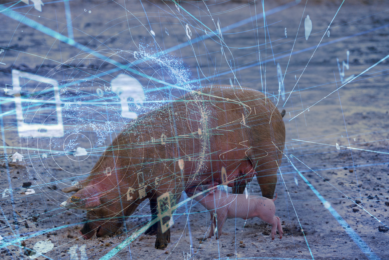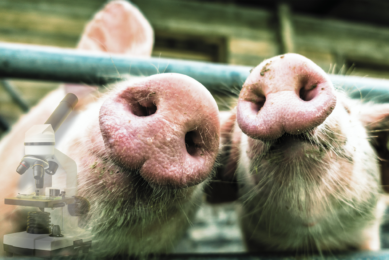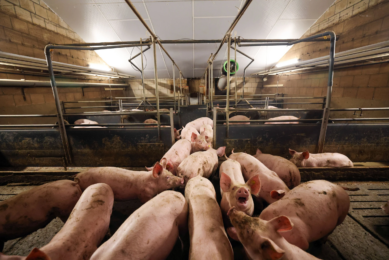Antibiotic banned, but still around

Animal feed is prepared by different ingredients, often coming from different sources. In the Netherlands, an ‘ancient’ and banned antibiotic has shown up in animal feed. The quest for finding out what happened is in full swing.
Several products such as antibiotics have been banned in the past. One of them is furazolidone. This antibiotic, part of the nitrofuran group, hit the European market in 1954 and showed to be very effective against infections like Salmonella, E. coli and intestinal parasites in poultry, swine and cattle. But also in aquaculture and for bees, this antibiotic was used to a large extent in order to prevent and treat bacterial infections. But it appeared that the breakdown products (metabolites) of furazolidone have carcinogenic effects. This made the European Commission ban the product in Europe in 1995. In the United States it was banned in 2009. The use of antibiotics from the nitrofurans group in livestock has also been prohibited in countries such as Australia, Philippines, Thailand and Brazil.
Furazolidone found every year
But ‘banned’ does not mean the product is not produced or used anymore. It is often still around and thanks to RASFF – the Rapid Alert System for Food and Feed – from the European Commission, we can keep track of when the tests showed the metabolites of furazolidone in feed and food products. For furazolidone, a zero tolerance policy applies, so when tests detect even trace amounts, the meat or animals have to be destroyed. Better to be safe than sorry! But before officials make an alert in the RASFF system, it has to be detected of course. In the case of the Netherlands, furazolidone was found in April already, during routine (urine) controls at veal calf farms. Only a months later, it became clear how many farms got the contaminated feed and who supplied it. Last week, the Dutch Food Safety Authority decided to cull the animals on all four veal calf farms. The culling of pigs, that were also in contact with the contaminated feed is still under discussion, as the tests are still being carried out. This is why the RASFF alert by the Netherlands and Germany (the two countries were the contaminated feed was consumed by animals) was ‘only’ made on July 15, several months after it was detected.
Delving into the archives of RASFF, I noticed that every year, in the years after the ban, furazolidone popped up many times. In 2007 for example, RASFF got more than 20 alerts/border rejections concerning furazolidone (mainly related to fish and shrimp products). In 2014, the findings of furazolidone in the Netherlands was not the only one. It was found in frozen, peeled shrimps from India (rejected at the Belgian and UK border), frozen rabbit meat from China (rejected at the Belgian border), frozen domestic rabbits and frozen rabbit meat from China (rejected at the German border) and frozen shrimps from India (rejected at the French border).
Going back to the source
The banned substance seem to appear in fish, crustaceans and rabbits a lot, mainly from Asian countries. But why did the Dutch company added the furazolidone in feed intended for calves and pigs? Was it on purpose, or was it an accident? Who supplied the product to them and why would a company take the risks? Today, the Dutch Food Safety Authority (NVWA-IOD) is searching the premises of the animal feed company and a house to find out where and if furazolidone is present. Interestingly, the company that supplied the contaminated ingredients earlier blamed homing pigeons (kept as pets) to be the cause of the contamination. The company states that furazolidone is still allowed to be used in these pet animals, and states that they have entered the feed storage rooms and hence shed the residues with their manure. Doesn’t sound realistic to me. And how many pigeons do you need to have around your feed to cause a feed scandal?
One thing is clear: these events and the alerts made in the RASFF system show that logistics around feed and food production can be quite complicated. And banning a substance does not mean it is not there anymore.











